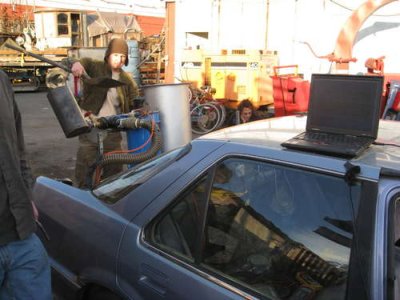A YouTuber who made his own ``backpack with electric duct fan'' that accelerates the bicycle by rotating the propeller appears

For people who commute to work or school by bicycle, days with strong headwinds and steep uphill slopes are the enemy. In order to overcome such problems with bicycles, Dutch engineering YouTube channel
Nooit meer wind tegen met Electrische Straalmotoren! - YouTube
Transforming EDF Backpack For A Speed Boost | Hackaday
https://hackaday.com/2024/02/03/transforming-edf-backpack-for-a-speed-boost/
Emil from The Practical Engineer purchased two electric duct fans for this project. A duct fan has a propeller-like rotor fan installed inside a cylindrical duct, and generates thrust by rotating it.

The next thing I took out was an old backpack.

Rather than attaching an electric duct fan to a bicycle, Emil plans to create a device that can be stored in a backpack and deployed only when desired.

The image is that the arm and motor are attached to a plate that matches the shape of the backpack, and when you press a button, it unfolds and the duct fan starts operating.

Emile used Fusion 360 , a cloud-based 3D CAD software, to create the blueprint for the equipment. If there is not a certain amount of space between the electric duct fan and the backpack body, the air will not be pushed out properly, so the arm needs to be extended quite widely.

This is what it looks like when you fold the arm.

Some of the parts were apparently designed using Fusion 360's automatic design proposal generation tool, and have very organic shapes.

Since it would be difficult for Emile to manufacture this part himself, he turned to

While we wait for the parts ordered from Xometry to arrive, we will form the aluminum steel plates that will mount the equipment.

We also manufacture the parts for attaching the arm and attach it to the aluminum steel plate.

Open the parts that arrived.

Although it has a complicated shape, it was made exactly as designed.

Immediately attach the electronic parts and arm to the aluminum steel plate.

The code that controls the whole thing was written using ChatGPT.

The arm is controlled with

After connecting several wires and threads, the base was finally completed.

When I tested it, the arm was properly extended to the side.
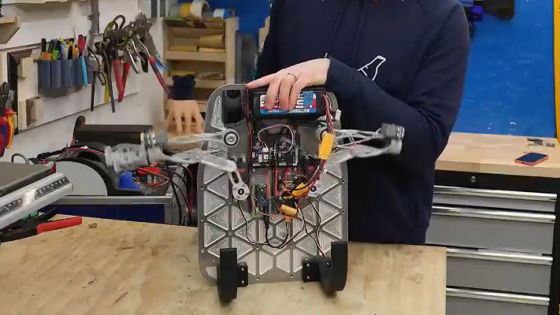
The rotation to change the direction of the electric duct fan after deployment is also perfect.
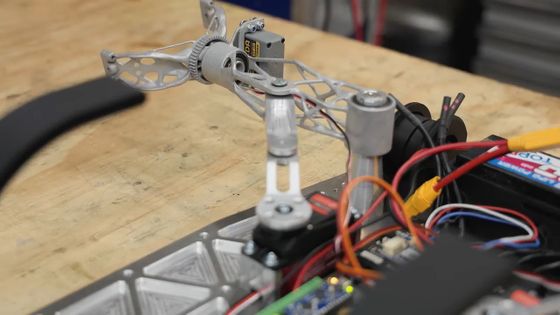
Attach the electric duct fan to the arm.
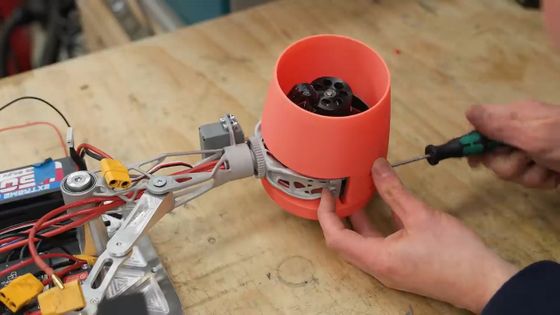
The system that allows you to freely deploy the electric duct fan is now complete. The folded state is below.

It looks like this when expanded.
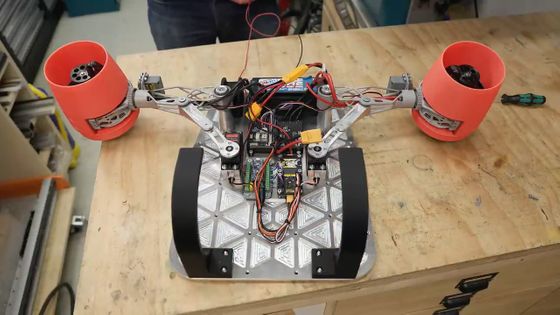
When you try turning the fan, you can see that the dirt and dust in the room is being stirred up and the air is being pushed out vigorously.

Next, we will modify the backpack so that we can normally store the electric duct fan and deploy it when needed.
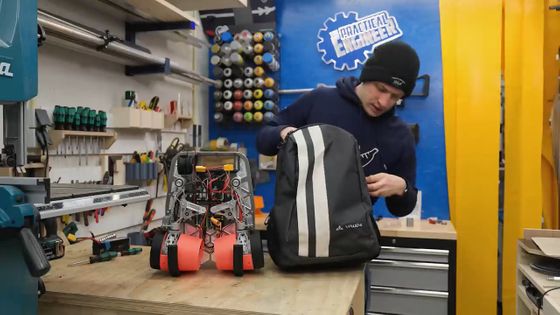
Mr. Emile boldly cuts the fabric.
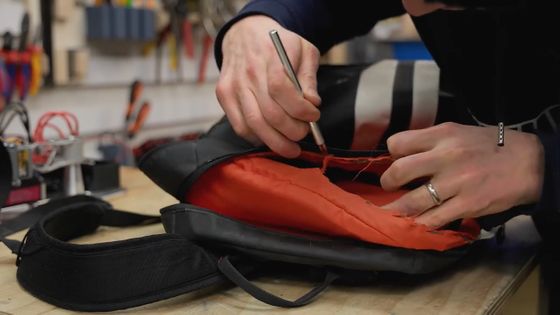
Actually put the device in your backpack.
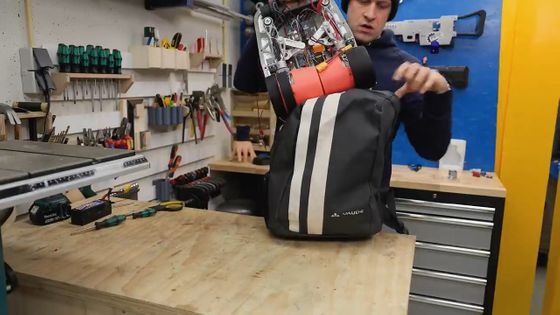
Cut the side part where the electric duct fan pops out.
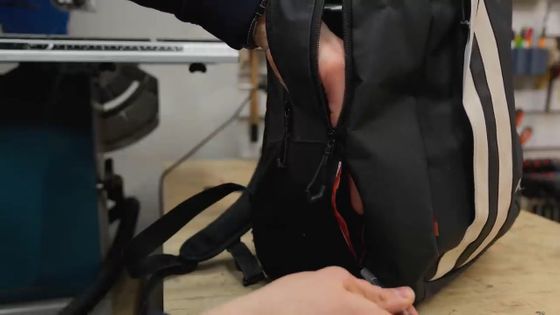
The side opens wide and the electric duct fan can be seen.

When I pressed the button attached to my backpack's belt, an electric duct fan popped out from the side.
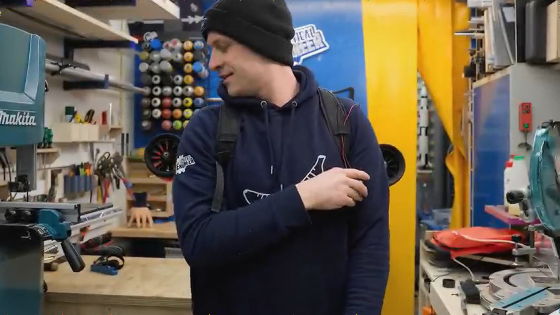
This is what it looks like from the side.

This is what it looks like from behind. It feels like something out of a science fiction movie.

Mr. Emile actually pedals his bike outside and tries out an electric duct fan.

Electric duct fan deployed.

As the fan spun and created thrust, the bike moved forward without Emile having to pedal.

Mr. Emil smiles.

It seems that you can feel the power not only on a bicycle but also on a skateboard.

Related Posts:







